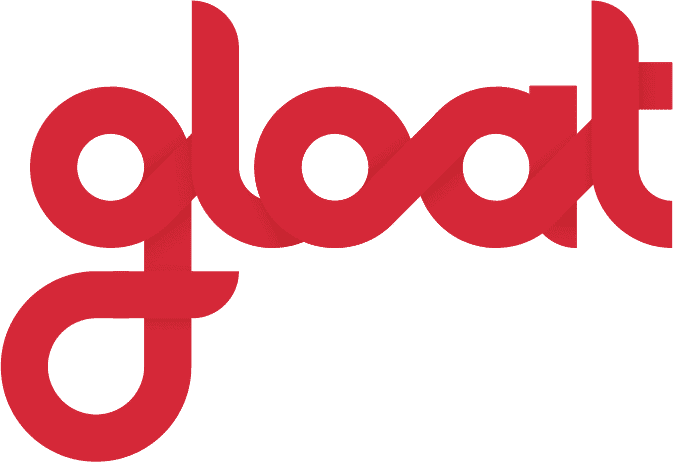Creating tomorrow’s change today: 3 talent marketplace journeys
A look at how Mastercard, HSBC, and Schneider Electric are transforming their talent strategies

Finding the way forward in a time rife with uncertainty requires three things: flexibility to respond to new challenges, actionable insights, and a collective willingness to adjust as the times demand. While we may have wished for a moment of reprieve after the COVID-19 pandemic subsided, the economic landscape that emerged out of the crisis is every bit as opaque, making now a moment of action.
Talent strategies are at the heart of the transformation initiatives needed at many organizations, putting additional pressure on HR departments looking to find a remedy to mounting business pressures. Talent scarcity was becoming an issue before the pandemic with 80% of HR leaders experiencing a talent shortage at their company. And while the labor market proves to remain befuddling with low unemployment, high worker fatigue, and a wave of layoffs unsettling the status quo, innovations are also driving the need to rethink which skills will matter in the future.
The fact is, there’s no single solution to address each of these issues. But one of the most promising innovations to create a more nimble, adaptable organization is the talent marketplace. It proved its worth at many businesses during the pandemic, connecting talent to opportunities at scale, and that same virtue is showing to be one of the truest signs of a company built to not just survive but thrive in the future of work.
How? By their nature: talent marketplaces are employee-centric solutions, not company-centric, and are embraced by workers for their ability to open opportunities to them. These opportunities are all geared at helping employees grow and develop: project work opportunities, connecting with a mentor, learning programs, volunteer gigs, and even open jobs all help build new skills that enable growth in many different directions. Essentially, they democratize career development at scale (read more about this in our definitive guide to learning).
Where a talent marketplace also differentiates itself from other HR solutions is that it is not actually an HR solution. Talent marketplaces are, in practice, business solutions that fundamentally reform the way organizations think about their talent structures, how work gets done within their organization, and how talent decisions are made at scale. By bringing skills insights and marketplace data together in a central location, business leaders are equipped with information previously untenable to manage in a single source of truth; talent marketplaces do just that, with the additional feature of being the place of enablement for real, tangible work to come to life.
To help more companies understand the true power of a talent marketplace, we at The Josh Bersin Company have collected research on forward-thinking organizations and interviews with talent leaders making a difference at their companies. Mastercard, HSBC, and Schneider Electric all started their talent marketplace journeys from different places and are experiencing exceptional results beyond what they expected to accomplish; now, we’re sharing the path they pioneered for others.
How talent marketplaces are reshaping organizations
In short, talent marketplaces empower companies to create more resilient work structures by breaking down departmental and geographic silos and connecting talent to the right opportunities and projects based on their skills, not simply their job title. As we show in our definitive guide to organization and work design, talent marketplaces are essential to a more agile and accountable way of work, unlocking innovation and organizational adaptability.
One of the biggest roadblocks in leveraging a talent marketplace is the unfamiliarity with what changes they will bring. Because employees can work on projects, assignments, or mentorship opportunities across the company, they may dedicate less time to their “day job”. Agile ways of work require a mindset shift throughout the organization; workers no longer can solely belong to a single manager or department, but instead have the power to align to organizational priorities across the company where their skills, interests, and business priorities are in greatest alignment.
That’s not to say that it’s a free-for-all. Most leading talent marketplaces feature an AI component that helps connect opportunities and talent at scale, guiding the process in an orderly fashion while accelerating it with machine learning. Through the power of AI, project leaders don’t have to waste valuable time sorting through a company’s entire database to find the right candidates, and talent can see where their skills align—not just to their job title, but also to their career ambitions, which are also factored into leading talent marketplaces.
Change is needed, and with it comes uncertainty. Three pioneering organizations shared their stories with us to learn from.
Mastercard
At the onset of the pandemic, Mastercard CEO Ajay Banga shared during a global town hall meeting that customers were looking for partnerships and solutions to help them make it through the uncertainty. The call was resoundingly answered by employees who volunteered to donate their time, skills, and passions to help both their customers and the company’s strategic priorities. This first incarnation of a talent marketplace, called Project Possible, was a success—but limited due to it being carried out manually through spreadsheets.
Roughly 30% of employees who volunteered were successfully matched to opportunities. Heather Yurko, Vice President of Digital Talent, knew that there had to be a better way.
“We knew that there was a way for us to start thinking about this differently. During a time of uncertainty, at the beginning of the pandemic, we really needed to focus on how we could be more adaptive and more responsive,” says Yurko. “Thinking about matching the skills of our employees to our customers’ needs became a really critical path for us.”
After seeing the value in unlocking capacity, Mastercard decided to partner with Gloat to bring talent mobility to speed and scale. The result, Unlocked, provides them the agility needed to meet evolving employee and customer needs through the platform’s AI—removing the manual processes that once held back their talent marketplace’s full potential.
To date, Mastercard has unlocked more than $21 million in productivity within the first year of Unlocked and registered 62% of employees on the platform. Now the company can match employees to projects, volunteering opportunities, and mentorships at a scale virtually impossible before.
What started as a small project born out of need is now a way of working and a way of leading talent into the future.
HSBC
As one of the world’s leading banking and financial services organizations with a history dating back to 1865, HSBC is no stranger to change. With more than 220,000 employees across the globe serving 40 million customers, leaders at the company knew that they needed to ensure that their talent was continuing to develop the necessary skills to meet ever-changing customer demands.
By focusing their talent marketplace’s purpose on simplifying access to project and job opportunities, learning, and coaching throughout the organization, talent leaders at the company could formulate a continuous-learning strategy that focused on future skills.
Within thirteen weeks, the company had a proof of concept. After rolling out the talent marketplace gradually, focusing on specific sectors of the business to assess what tweaks needed to be made on a global rollout, HSBC continued its momentum to enroll more than 140,000 of its employees on the platform.
The talent marketplace was critical to the transformation into a digital-first bank, becoming the technological backbone of their work on future skills.
Schneider Electric
A worrying trend appeared to leaders at Schneider Electric: Nearly half of the employees who had voluntarily left the organization cited a lack of growth opportunities as a top concern, hurting the company’s retention rates and driving costs in subsequent recruitment, training, and lost productivity. When the organization decided to implement a talent marketplace to address these challenges, removing obstacles to employee development and normalizing a gig- or project-based style of work throughout the organization was their main plan of attack.
Within two months of their internal talent marketplace’s launch, 60% of employees were registered in the system and more than 2,300 employees were exploring opportunities outside of their normal purview—but within the company. 127,000 hours of productivity were unlocked within a few weeks of implementation, and to date, more than $15 million in savings have been captured due to both enhanced productivity and reduced recruiting expenses.
What started as a retention strategy at Schneider Electric turned into a way to also foster global innovation: more than 60% of projects are cross-functional and cross-regional.
The common threads of talent marketplace success
By their nature, talent marketplaces are not platforms designed to control talent flow. Instead, the most successful ones inform the organization with real-time insights into the skills, experiences, and desires of the workforce. Whether companies are looking to increase engagement and retention, foster talent mobility, drive innovation, improve DEIB efforts, or create more pathways for employees to grow within the company, the common thread is the democratization of worker opportunity—instead of top-down hierarchies, it creates an agile, dynamic place to work.
Rather than completing a multi-year skills taxonomy project, the pioneers in this area apply agile principles to the talent marketplace concept: they start small, pick a specific use case or problem, rapidly deploy, gather insights, and iterate and refine.
To see where a talent marketplace can take you, look through The Josh Bersin Company’s Talent Marketplace Collection to see how forward-thinking organizations have applied them. Members of The Josh Bersin Company can also access full written case studies explaining the journey in detail and review the definitive guide to organization design to learn about the journey to agile.





